posted July 13, 2021
by Cris Comer, VLCE
Recently, a well-known vegan activist staged a display at a fast-food restaurant. While we applaud the concept of drawing attention to the horrific treatment of animals slaughtered each year for food, this event included pouring fake blood on the floor of the restaurant. You may be wondering why this is problematic—she brought attention to the plight of the animals, after all. What about the persons impacted by this event? The workers who are being paid a nominal wages to make a living in our challenging post-COVID world and children who are there with parents to get a meal. Should they get a consideration in this situation? Who is left to clean up the mess, these hourly workers? How did the sight of the fake blood impact the children?
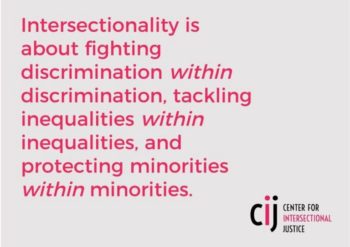
If your veganism solely focuses on the animals, consider expanding your thought circle to include all vulnerable beings impacted by the animal agriculture supply chain. This is a simplistic example of intersectionality. Intersectionality, as it relates to veganism, includes considering the impact on other marginalized groups when speaking for the animals. We readily see this when speaking against the dairy industry by using examples of “taking a baby from her mom” and reframing this vegan concept as also being a feminist issue. This example shows the overlap of being vegan and women’s rights.
How do we expand our veganism to be intersectional? When approaching vegan concepts and expanding our thought circle beyond animals, we begin to understand that to truly advocate for the animals we must include concepts like sexuality, (dis)ability, poverty, education, religion, class, nationality, ethnicity, age, and more. There are no single-issue struggles because we do not live single-issue lives.
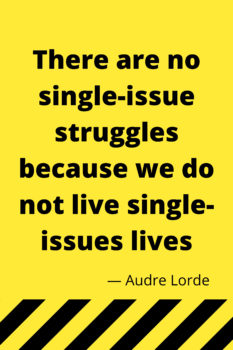
Some believe that veganism is an animal-only issue. As a woman of color, it is impossible for me to view veganism through that lens. I recall discussions with very passionate individuals who used the analogy of slavery to tug at my heartstrings and open my eyes to the plight of animals. I have heard from Jewish friends about similar conversations in which the Holocaust was compared to the plight of the animals. This approach has the exact opposite impact, often falling on closed eyes and ears. Why? Those comparisons are dehumanizing and off-putting to those of us whose ancestors lived through these horrors. If your outreach does not consider the feelings of the person you are engaging, your outreach is less effective and borders upon failure. It does not help the animals and wastes everyone’s time in the process.
Veganism should be all-inclusive, and it should encompass perspectives and voices from differing marginalized groups. We are all in the struggle together, and when our voices shout in unison, we make a louder noise, we make a stronger impact, we bring a broader change to the world. So how do you expand your thought circle to be more intersectional with your veganism and your outreach? You must also live an intersectional life!
1. Expand Your Circle
Look at your friends group, your outreach group, your vegan circle. Does everyone look like you? If so, you run the risk that everyone also thinks like you. If you want differing opinions, approaches, and ideas, cultivate a group with people from differing backgrounds and varied interests. This is guaranteed to bring alternative perspectives.

2. Ask Questions and Listen to the Feedback
When entering a conversation with someone who doesn’t look like you, be willing to listen to their feedback, especially when it does not align with your own thoughts and beliefs. If you are told that an example is offensive, use a different example instead of doubling down and insisting there’s nothing wrong with what you have said
3. Look for Growth Opportunities
It’s easy to speak for the animals because animals can’t speak back. As you expand your vegan thought circle to include other marginalized groups, you may find discomforting situations. That feeling is growth—lean into it. As long as you come from a genuine place, your questions are probably welcomed. You may even make a new friend (see suggestion #1).
There is no single way to be vegan these days. However, as long as we keep the animals central to our thoughts and actions and expand our thought circle to include others who are caught up in the animal agriculture supply chain, we can’t go wrong.
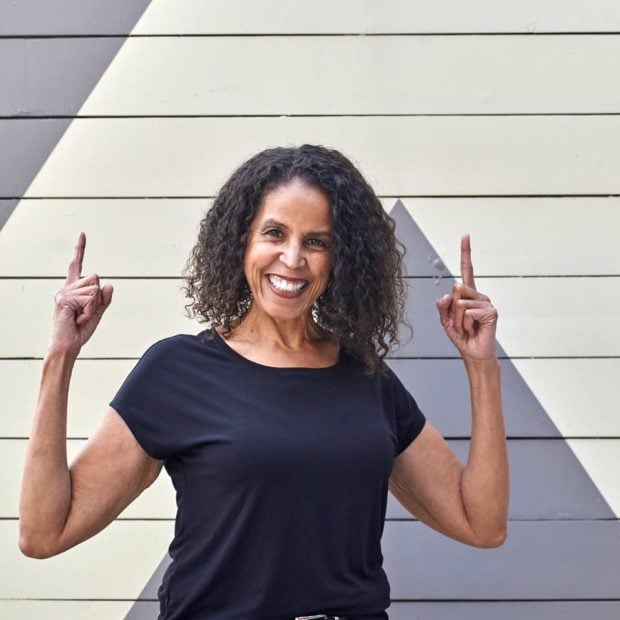
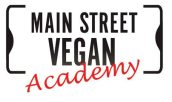
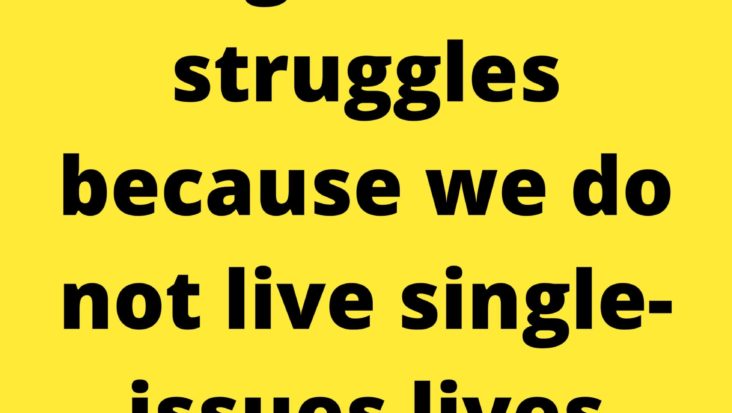
Thank you…excellent!
I have heard people struggle to explain intersectionality. You gave an explanation that is easy to understand. Kudos to you!
Such an important piece: insightful, incisive, and impactful. The author, Cris Comer, makes excellent points about her experiences and makes intersectional vegan activism a mandate for the vegan community.
Kudos!!!!
Excellent! I’ve struggled with this for decades. As a strong supporter for the vegan movement, I did not want to get “stuck” within a single issue message. Within that struggle I distanced myself from the word “vegan” in my work and use “plant-based” while still a strong supporter for human and animal rights.
Great peice! Thank you for taking time to explain and define – as well as offering easy-to-apply steps to resolution.